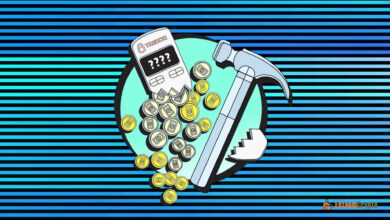Crypto Bubbles Why They Rise Pop & What Comes Next

Crypto bubbles are among the most discussed—and feared—phenomena. Whether you are a seasoned crypto investor or a newcomer exploring blockchain-based assets, the term “crypto bubbles” inevitably comes up in conversations, news headlines, and cautionary pieces. But what exactly is a crypto bubble? Why do they tend to occur in the cryptocurrency space more frequently and intensely than in traditional markets? And perhaps most importantly, how can you protect your portfolio when one inflates or bursts?
This article explores the lifecycle of crypto bubbles, the behavioral, technical, and market drivers behind them, historical case studies, how to identify warning signs, strategies for navigating bubbles, and what the future might hold for speculation cycles in crypto. Throughout, we’ll weave in related phrases and LSI keywords (such as speculative bubbles, bubble detection, asset overvaluation, market sentiment, and bubble bursting) to give a comprehensive and SEO-optimized deep dive into this captivating topic.
What Exactly Are Crypto Bubbles
At its core, a crypto bubble refers to a situation where the price of one or multiple cryptocurrency assets inflates rapidly to levels far beyond what fundamentals would justify. In many cases, the growth is driven by speculative excitement, hype, and herd psychology, rather than genuine technical adoption, usage, or value creation. Eventually, the bubble “pops” or corrects sharply, causing steep price declines that often leave latecomers with heavy losses.
In traditional finance, the concept of a “speculative bubble” is well studied. A crypto bubble is a specialized variant — the same basic principles apply, but the speed, leverage, regulatory uncertainty, and retail participation tend to amplify it in the crypto domain.
One helpful way to think about it is that during a crypto bubble, the market’s expectations outpace reality. Instead of prices reflecting utility, network effect, developer activity, or real-world use, they reflect expectations of further price increases—a self-reinforcing loop until it cannot sustain itself.
The Anatomy of a Crypto Bubble

Understanding how a bubble forms and evolves gives you a roadmap to detect one in real time. The lifecycle of a crypto bubble can be broken down into several phases:
1. Accumulation / Early Adoption
In the beginning, a promising innovation or protocol gains traction with early adopters, developers, and niche investors. Technical improvements, community support, or unique features attract attention. This phase often sees modest price appreciation, but still grounded in fundamentals.
2. Takeoff / Awareness
As the project shows potential, more people begin noticing it. Media coverage, influencer commentary, and word-of-mouth start to push interest upward. During this phase, new capital flows in not because of high conviction in long-term value but because people want to ride the momentum.
3. Euphoria / Mania
This is where bubbles are most visible and dramatic. Prices explode upward, attention skyrockets, and many investors jump in with minimal due diligence. The “fear of missing out” (FOMO) becomes a dominant force. At times, valuations detach entirely from underlying metrics like transaction volume, developer activity, or adoption. This overexuberance is a hallmark of speculative bubbles.
4. Distribution / Peak
The early, savvy investors begin to reduce their exposure and take profits. The crowd is still buying, pushing the price to its peak, but cracks start to show: volatility increases, sentiment begins to split, and some cautious participants hesitate.
5. Tipping Point / Crash / Burst
An external shock (e.g. regulatory action, macro news, hack) or internal exhaustion triggers a panic sell. Prices collapse rapidly as leverage unwinds, stop losses are triggered, and confidence evaporates. Many retail investors are caught off guard, leading to steep losses.
6. Aftermath / Consolidation
Following the burst, the market may enter a depression-like phase where prices stagnate or recover slowly. Many projects fail or disappear. Surviving assets undergo reassessments, sometimes resetting to more realistic valuations. Recovery may take months or years, or, in some cases, may never fully return to prior peaks. This full cycle is not guaranteed to repeat identically each time. In some bubbles, the decline is partial, or the recovery is swift if new catalysts emerge. Still, this framework is useful to analyze past and present cycles.
Why Crypto Bubbles Keep Happening
Why does the crypto world see so many bubbles? Multiple structural and psychological factors combine in ways that make bubble formation more likely in this space than in traditional asset classes.
1. High Volatility & Low Friction Markets
Cryptocurrency markets trade 24/7, are global, and are relatively accessible. There are fewer barriers to entry compared to equities or real estate. This means capital flows can accelerate quickly, and corrections can happen with equal speed.
2. Leverage & Margin Trading
Many crypto platforms support leverage, derivatives, margin, and futures. These amplify gains but also magnify losses. When markets turn, leveraged positions unwind in cascades, accelerating the burst of a bubble.
3. Retail Investor Dominance & FOMO
A large portion of crypto market participants are retail investors, who can be strongly influenced by hype, social media, and emotional behavior. FOMO (fear of missing out) is a well-documented driver of speculative bubbles, and in crypto it’s a pervasive force.
4. Narrative & Hype Cycles
Crypto often rides on narratives: “DeFi will revolutionize finance,” “Web3 will replace the internet,” or “Everyone will use this token in future.” These narratives attract speculative capital, even when the underlying projects aren’t mature. Media hype, influencer endorsements, and social buzz play a big role in inflating bubbles.
5. Information Asymmetry & Herd Behavior
Not all investors have equal knowledge. Some insiders or early backers have far better insight. Many others chase trends, following what they see others doing. Herd behavior is a classic ingredient in bubble formation.
6. Lax Regulation & Market Manipulation
In many jurisdictions, cryptocurrency regulation is still catching up. This allows shady actors, pump-and-dump schemes, wash trading, and manipulative tactics to persist. Such behaviors can distort prices further, inflating crypto bubbles artificially.
7. Speculative Feedback Loops
Once a bubble begins, rising prices attract more inflows. More inflows push prices higher, which attracts even more capital. This positive feedback loop continues until the system destabilizes. Research on speculative bubbles often models this feedback effect as central to bubble formation.
Historical Examples of Crypto Bubbles
Studying past crypto bubbles is a valuable way to understand patterns, warning signs, and how markets responded.
Bitcoin’s Early Bubble (2011)
Bitcoin’s first major speculative event occurred in 2011 when its price rose from under one dollar to about $30 in a short span. News and excitement drew non-technical investors. The bubble burst, and Bitcoin returned to single digits. This early episode exemplified the fragile nature of early adoption excitement.
2013 Boom & 2014 Collapse
In 2013, Bitcoin soared to over $1,000. Speculation, institutional interest, and media coverage fueled its run. However, regulatory uncertainty and events like the Mt. Gox exchange collapse triggered a crash. By 2014–2015, Bitcoin fell by over 80% from its peak.
2017–2018 ICO Mania
The ICO (Initial Coin Offering) boom is one of the most dramatic manifestations of crypto bubbles. Hundreds of projects launched tokens with little or no working product, marketed aggressively, and promised high returns. Investors poured in on hype. When reality caught up, many tokens failed, and the crash wiped out billions.
2020–2021 Surge & Crash
Bitcoin and many altcoins experienced extraordinary runups in 2020–2021, with total crypto market capitalization crossing $1 trillion. Meme coins, DeFi protocols, NFTs, and algorithmic stablecoin experiments multiplied. However, in 2022, multiple collapses (e.g. Terra/Luna) and contagion (e.g. Three Arrows Capital, FTX) triggered a sharp downturn.
Squid Game Token Scam (2021)
A striking example of a bubble–scam hybrid was the “Squid Game” token. Inspired by the popular TV show, the token spiked rapidly in value, only for investors to discover they couldn’t sell. The founders allegedly cashed out and vanished, leaving investors with worthless tokens. This extreme pump-and-dump revealed how speculative mania can coincide with outright fraud.
How to Spot Crypto Bubbles: Warning Signs

While no single signal is conclusive, a combination of indicators can help you detect a crypto bubble before it bursts. Here are key signs to be aware of:
A. Rapid Price Acceleration Without Fundamentals
If a token’s price doubles (or more) in a few days or weeks, but there is no corresponding growth in network activity, adoption, or fundamentals, it could be driven by speculation rather than real value.
B. Extreme Leverage & Margin Use
When exchanges show escalating margin positions, derivatives open interest, and leveraged bets, it suggests that many participants are overexposed. In a downturn, the forced liquidation of these positions can cascade.
C. Overheated Sentiment & FOMO
When social media, search trends, and influencer chatter spike sharply around crypto assets, it signals growing hype. People talk about “moon,” “to the moon,” or “rug pull” less critically and more aspirationally.
D. Unusual Token Launches & Meme Coins
If new tokens with questionable utility or no roadmap are launched and pump quickly, they may be riding speculation waves rather than technology advances. Meme coins are especially prone to bubble dynamics.
E. Valuations Detached from Use Cases
While speculative assets sometimes deserve a premium, valuations that ignore metrics like transaction volume, developer activity, or revenue suggest overvaluation.
F. Regulatory or External Shock Risk
Periods of uncertainty—regulatory announcements, macroeconomic stress, interest rate hikes—can serve as triggers. If prices are already inflated, any shock may burst the bubble.
G. Divergence in Indicators
If technical indicators (volume, network activity) diverge from price behavior (i.e., price keeps rising but volume weakens), that discrepancy often foreshadows a reversal.
Strategies for Navigating Crypto Bubbles
Confronted with rising or bursting crypto bubbles, how should you act? Here are strategic approaches to manage risk and opportunity.
1. Position Sizing & Risk Management
Never allocate your entire capital to speculative assets. Set strict percentage caps for your crypto exposure relative to your total portfolio. Use stop losses or preset exit points to limit downside risk.
2. Gradual Scaling
Rather than entering at the peak, consider scaling into positions gradually, buying more as conviction (via metrics) builds. This approach helps mitigate the risk of entering at an extreme.
3. Take Partial Profits
During the euphoria phase, systematically take profits. Even if you believe in the long-term potential, taking off portions of your position helps lock in gains and reduce exposure before a possible crash.
4. Use Hedging or Short Positions
If your platform allows, you can hedge your long exposure by shorting correlated assets, using options, or employing derivatives strategies. This can cushion downside during bubble bursts.
5. Diversification Across Crypto and Other Assets
Even within crypto, diversify across layers (e.g. layer-1 blockchains, infrastructure, stablecoins). Also hold portions in traditional assets (stocks, bonds, real estate) so a crypto crash doesn’t devastate your entire portfolio.
6. Stay Informed & Monitor Metrics
Keep an eye on on-chain data (active addresses, transaction volume), developer metrics, liquidity flow, and sentiment indicators. These will help you read if the bubble is losing steam. Use resources and dashboards that help detect bubble behavior (some models leverage social media and price patterns).
7. Know Your Time Horizon
If you’re a short-term trader, you may ride momentum and exit quickly. If you’re a long-term investor, use bubbles as opportunities to rebalance—sell some at peaks, hold a base allocation. Don’t get trapped by greed or fear.
Are Bubbles Always Bad? The Silver Linings
While bubbles often carry negative connotations, they are not entirely destructive. Indeed, some theories argue that speculative bubbles can accelerate innovation and adoption.
Innovation & Attention
Some researchers view bubbles as a way to draw massive capital, bring media attention, and catalyze development. The Social Bubble Hypothesis posits that bubbles can facilitate the diffusion of risky new technologies by engaging more stakeholders and funding infrastructure.
Market Learning & Resilience
After a crash, survivors tend to be stronger, more efficient, and better governed projects. Market cycles weed out weaker protocols, forcing more disciplined development and more realistic valuation frameworks.
Opportunity for New Entrants
Crash phases often offer buying opportunities for those willing to endure volatility. If you can distinguish projects with durable fundamentals, corrections may allow you to enter at reasonable prices. In short, while crypto bubbles come with substantial risk, they also contribute to the maturation of the ecosystem.
Are We in a Crypto Bubble Right Now
At any given moment, the question looms: is the market currently in a crypto bubble? Many experts believe that some parts of the crypto space may be overheated. For example, the co-CEO of Kraken has indicated that certain segments exhibit bubble-like behavior.
Indicators like high leverage, strong retail inflows, multiple new token launches with minimal utility, and growing hype around nascent narratives (e.g. memecoins, niche DeFi forks) often raise warning flags. However, not all sectors move in unison. Some mature projects with real adoption may still offer healthy growth potential even as speculative bubbles swirl around them. The key is cautious optimism: believe in the underlying technology, but recognize that bubble dynamics may distort valuations and amplify risk.
Future Trends & Bubble Mitigation in Crypto
What might the next cycles bring, and how could the industry evolve to reduce destructive bubbles?
Stronger Regulation & Institutional Oversight
As regulators worldwide clarify rules around securities, stablecoins, and exchanges, the space may mature. Clearer frameworks reduce the space for outright fraud and market manipulation—helping dampen bubble inflation.
Better On-Chain Analytics & Bubble Detection Tools
As data infrastructure and algorithmic models improve (e.g. applying social media signals, hyperbolic models, anomaly detection algorithms), it becomes easier to detect bubbles in real time.
Shift to Fundamental Valuations
Over time, we may see a shift away from narrative-driven speculation toward valuations grounded in usage, revenue, adoption metrics, network effects, and real economics. Crypto projects may become valued more like traditional tech firms.
Layered Speculation & Macro Bubble Effects
Crypto may increasingly sync with macro trends—interest rates, liquidity cycles, correlated asset bubbles (so-called “everything bubble”) may influence crypto valuation more directly.
More Resilient Protocols & De-Risked Design
Projects may embed circuit breakers, anti-whale mechanisms, or tokenomics that buffer speculative excess. Better governance and security standards can reduce systemic blowups. In sum, the future may bring fewer extreme crashes and more controlled boom-bust cycles, though volatility will likely remain part of the crypto DNA.
Also Read: Powerful Beginner Crypto Trading Guide 15 Smart Moves
Conclusion
The phenomenon of crypto bubbles is one of speculation’s most dramatic expressions. These cycles of euphoria and collapse have punctuated cryptocurrency history and remain a constant risk and opportunity for market participants. Understanding their anatomy, identifying warning signs, and applying disciplined strategies can help you better navigate the extremes of this space.
While bubbles often come with steep losses, they also catalyze innovation and attention. The key for any investor is to remain pragmatic: distinguish between hype and fundamentals, manage your risk, and be ready to adapt when tides shift. As the industry continues to mature, the hope is that future cycles will be more tempered and less destructive—but as always, the possibility of unexpected turns remains.
FAQs
Q: How long do crypto bubbles usually last?
There is no fixed duration. Some bubbles may inflate and burst within weeks or months, while others—especially when sustained by macro liquidity—can extend over a year or more. Duration depends on momentum, leverage, external macro shocks, and how fast sentiment shifts.
Q: Can you profit from a crypto bubble without getting burned?
Yes, if you’re disciplined. Techniques include entering early, taking partial profits along the way, hedging with derivatives, scaling out before the peak, and using stop losses. But it’s high risk, and timing is extremely difficult.
Q: What’s the difference between a crypto bubble and a healthy bull run?
A healthy bull run is backed by fundamentals: adoption, usage growth, development, and sustainable narratives. A bubble run is driven primarily by speculation, FOMO, many new entrants chasing price, and valuations detached from real metrics.
Q: Are all cryptocurrencies subject to bubble risk?
Yes, to some degree. But risk varies. Established coins with high liquidity, strong developer communities, and proven use cases (e.g. Bitcoin, Ethereum) tend to have more resilience. Smaller, nascent, or meme tokens are more vulnerable to bubble dynamics.
Q: How can I use bubble detection tools or metrics?
You can monitor social media sentiment, on-chain metrics (active addresses, transaction volumes), derivatives open interest, hedge fund flows, and anomaly detection models (some based on hyperbolic patterns). Combining multiple indicators gives a stronger signal than relying on one alone.




